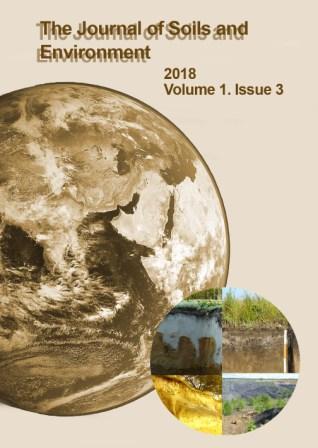Fertility of soils on slope, yield structure and quality of spring wheat in the south of Western Siberia
DOI:
https://doi.org/10.31251/pos.v1i3.37Keywords:
Greyzemic Chernozems, Haplic Chernozems, Greyzemic Phaeozems, eroded soils, Novosibirsk region, wheat productivity, mass of 1000 grains, raw protein, nitrogen, phosphorus, potassium in grain and strawAbstract
The aim of the study. The aim of the study was to describe the fertility of Greyzemic Chernozems, Нaplic Chernozem and Greyzemic Phaeozems located on erosion-prone slopes; to evaluate the yield and grain quality of spring soft wheat.
The location and time of the study. Research was conducted on soils of the three experimental plots. The study area was located in the southeastern part of West Siberia within the boundaries of the Bugotak Hills (called Cis-Salair region) on the right bank side of the Ob River in the Novosibirsk region in the south of West Siberia. Plot 1 was located in the Iskitim district of the Novosibirsk region on the slope of southern exposure with 0- 6º gradient and occupied by Greyzemic Chernozems with different degree of soil erosion. In the Toguchin district of the Novosibirsk region two plots were located. Plot 2 was located on the slope of southeastern exposure with 0- 6.5º gradient and occupied by Нaplic Chernozems and Greyzemic Phaeozems. Plot 3 was located on the slope of northwestern exposure with 0-4.5º gradient and occupied by the non-eroded, slightly and moderately eroded Greyzemic Phaeozems. Cereal crops were spring soft wheat of two cultivars: Novosibirskaya 29 (plot 1; 2010 and 2014) and Memory of Vavenkov (plots 2, 3; 2011).
Metodology. Two replicate soil samples were collected from the soil profiles at the sites differing in soil erosion degree. Four wheat phytomass samples were taken by a special frame 50×50 cm.
The main results. Content and stock of soil organic carbon and total nitrogen decreased due to the increased soil erosion of Greyzemic Chernozems, Нaplic Chernozems and Greyzemic Phaeozems (Luvic) with maximal values in the Greyzemic Phaeozem (Colluvic). The N-NO3 in soils was low; the content of easily available phosphorus varied from the moderate to the high level, whereas the content of exchangeable potassium varied from low to increased level. Under extensive land use and restricted water reserves the wheat yield varied from 0.5 to 5 t/ha on the non-eroded Greyzemic Chernozems located on the south-exposed slope (plot 1). On the eroded soils the yield was found to be the same as on the non-eroded soil or even had a tendency to increase on slightly and moderately eroded soils. The maximal wheat yield (3.3 t/ha) was obtained on the Greyzemic Phaeozem (Colluvic). Between the non-eroded Нaplic Chernozems, eroded and stratified soils of the southeastern exposure (plot 2) there were no statistically significant differences in the yield, which varied from 3.2 to 4.1 t/ha. On the non-eroded Greyzemic Phaeozems (Luvic) of the northwestern exposure of the slope (plot 3) the yield was 4.3 t/ha, while on the slightly and moderately eroded soils it decreased to 1.1 t/ha. The mass of 1000 grains of wheat indicated the group with high mass (>30 g). The nitrogen content in grain and straw was low; potassium content was below the moderate level, while the content of phosphorus in grain was found to be optimal, and in straw it varied from the high to the low level. The content of raw protein was low (5-8%. The grain accounted for 35-48% of the total aboveground wheat phytomass.
Conclusion. Nutrient regime of eroded soils is determined by soil profile transformation due soil erosion process and its intensity, as well as due to anthropogenic factors. Potential and actual fertility of Нaplic Chernozems and Greyzemic Phaeozems are higher than that of Greyzemic Chernozems. The productivity of soft spring wheat depends on the quantity of atmospheric precipitation, type and degree of soil erosion and slope exposure.







